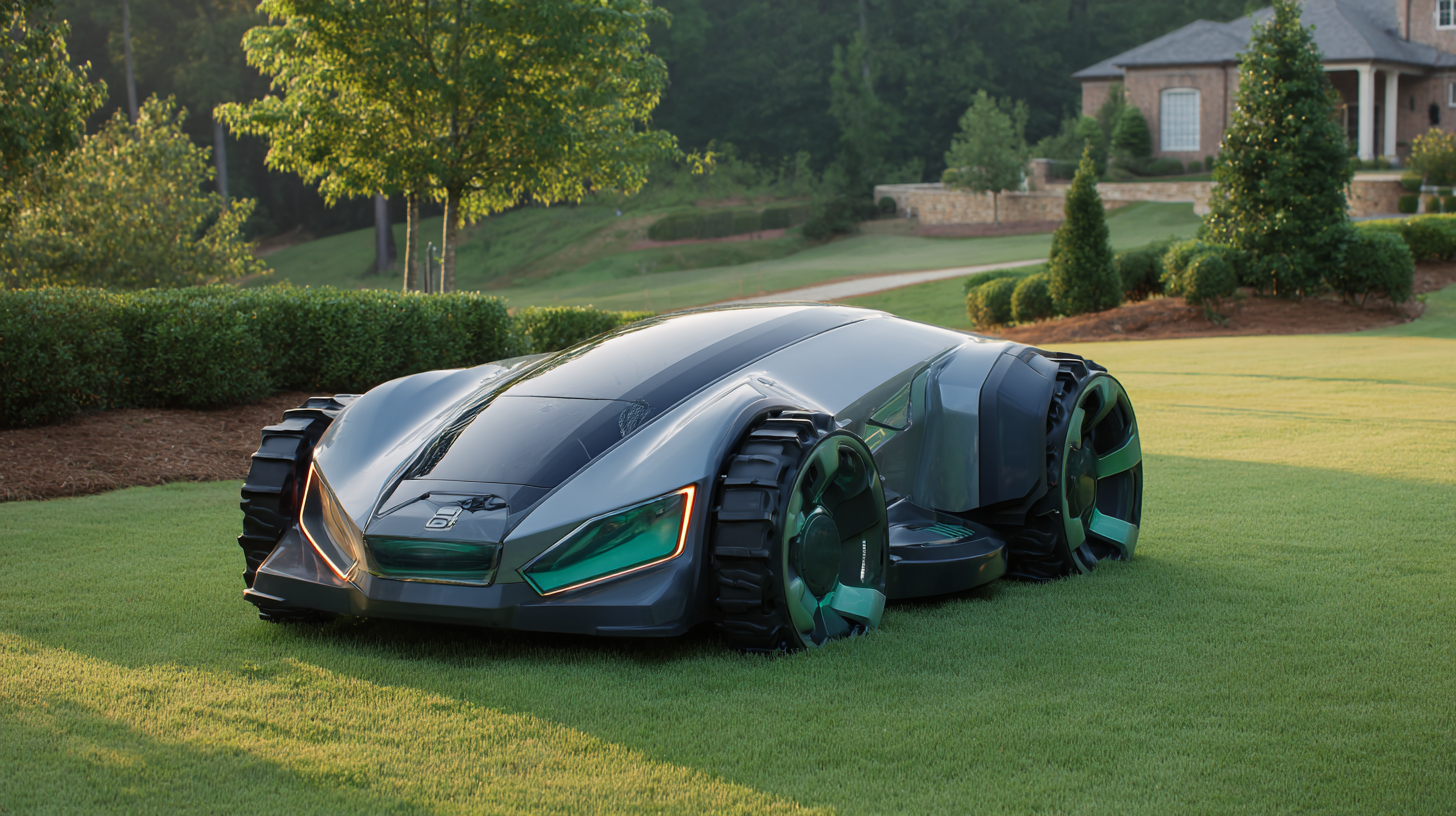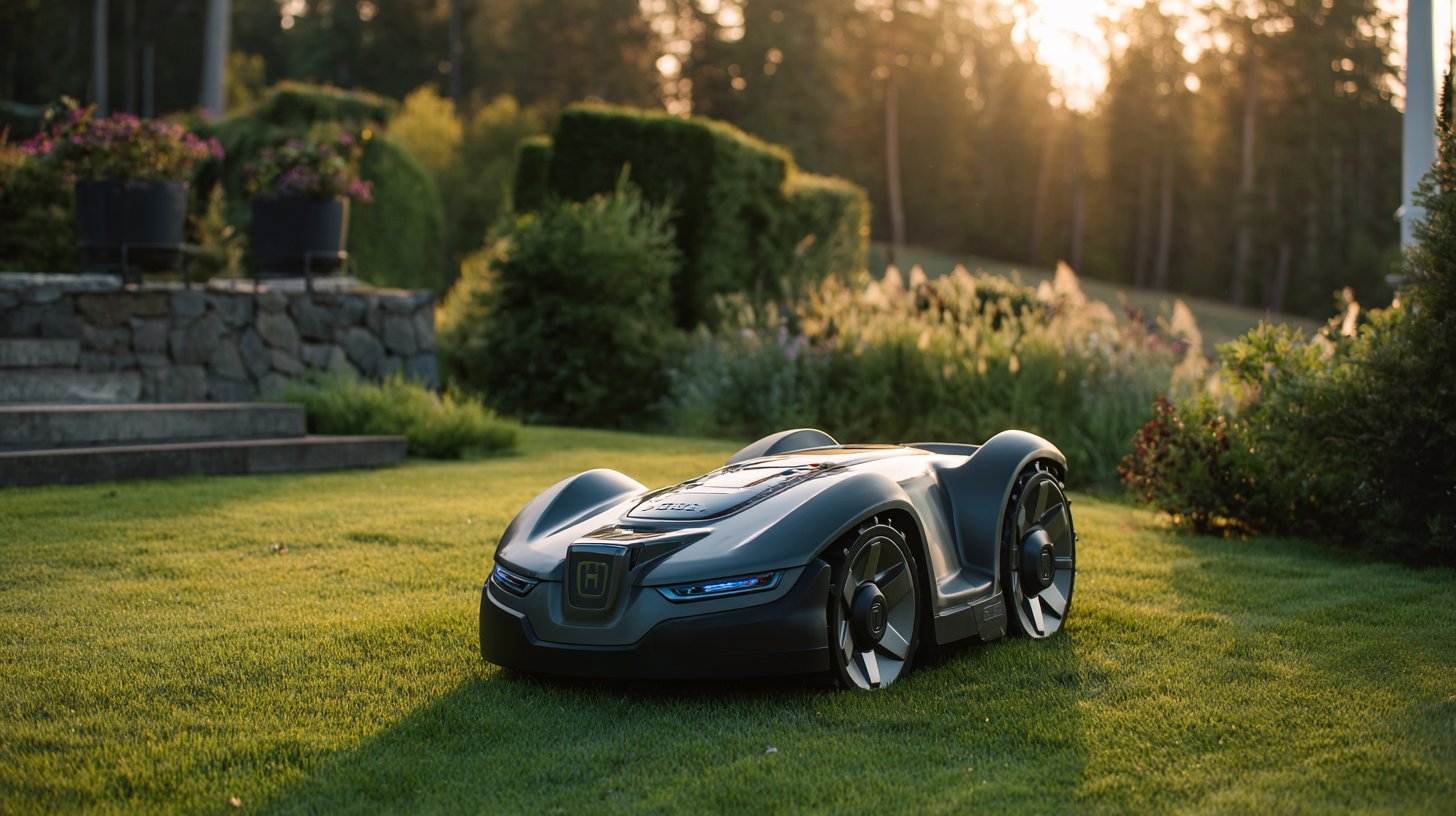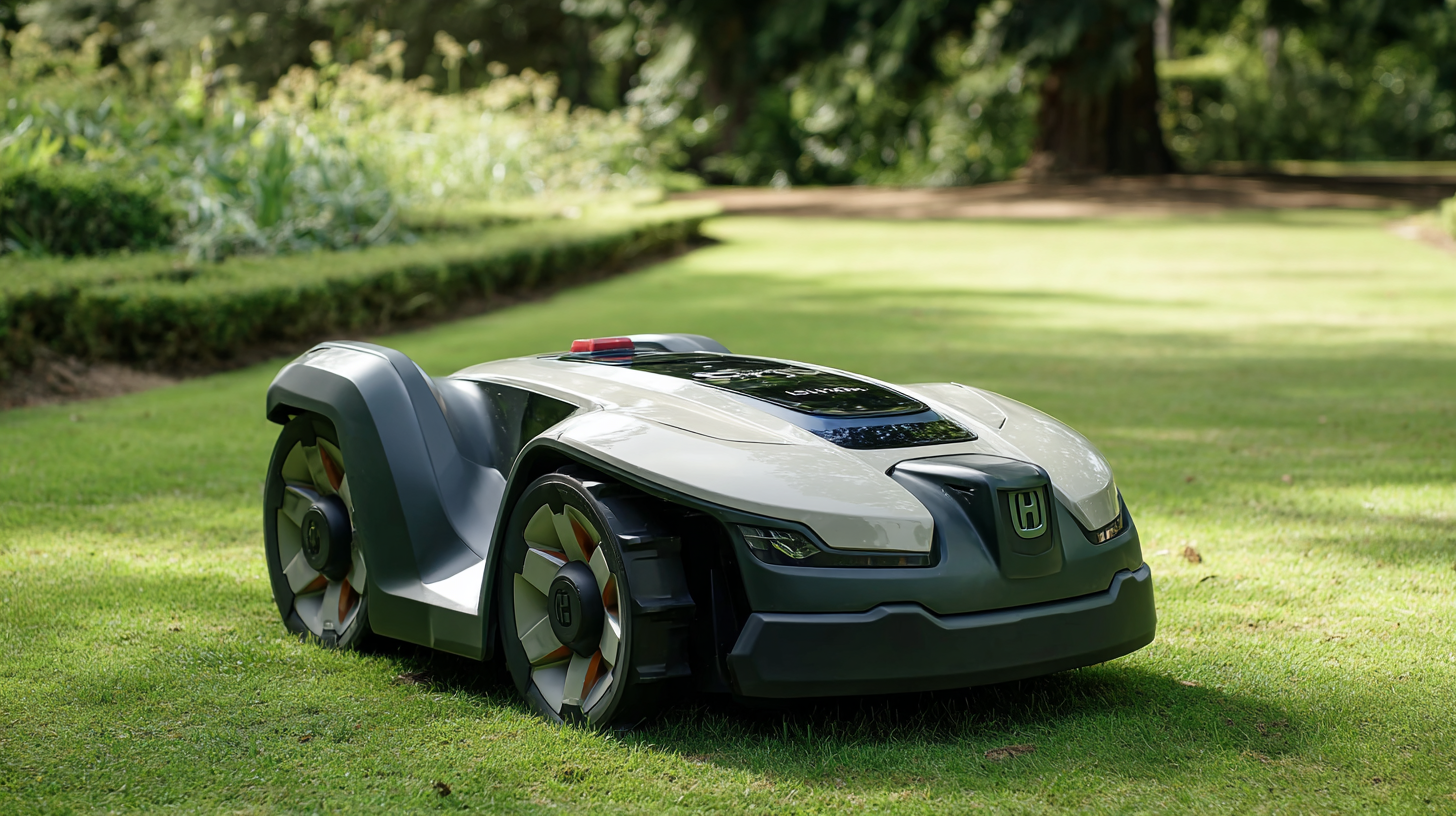The Future of Autonomous Lawn Care with Self Lawn Mowers
Table of Contents
- Exploring the Rise of Self-Driving Lawn Mowers in Outdoor Maintenance
- Innovative Features of Autonomous Lawn Care Solutions
- Comparative Analysis: Self Lawn Mowers vs. Traditional Mowing Equipment
- Environmental Impact: How Autonomous Mowers Contribute to Sustainability
- User Experience: The Convenience of Smart Lawn Care Technology
- Future Trends: What to Expect from Autonomous Lawn Care Innovations
- FAQS
- Conclusion
- Related Posts
The lawn care industry is undergoing a transformative shift with the advent of advanced technology, particularly in the realm of self lawn mowers. According to a recent market research report by Grand View Research, the global robotic lawn mower market is expected to reach USD 3.10 billion by 2025, growing at a remarkable compound annual growth rate (CAGR) of 15.6% from 2019 to 2025. This surge is driven by the increasing demand for automated gardening solutions that not only save time and labor but also enhance the precision of lawn care. Changzhou Hantechn Imp. & Exp. Co., Ltd., a professional supplier of power garden tools and hand tools in China, is at the forefront of this evolution. With over a decade of experience and certifications from ISO 9001, BSCI, and FSC, Hantechn is committed to providing high-quality, customized garden products for brands worldwide. The future of autonomous lawn care with self lawn mowers presents a unique opportunity for innovation and efficiency in maintaining beautiful landscapes.

Exploring the Rise of Self-Driving Lawn Mowers in Outdoor Maintenance
The rise of self-driving lawn mowers marks a transformative shift in outdoor maintenance, reshaping how we approach lawn care. With advancements in robotic technology, these autonomous mowers are not only efficient but also environmentally friendly. Equipped with sensors and GPS technology, they can navigate and map your yard, ensuring an even cut while avoiding obstacles. This innovation allows homeowners to reclaim their weekends while still maintaining the aesthetic appeal of their gardens.
As the demand for sustainable solutions grows, self-driving lawn mowers are becoming increasingly popular. They operate quietly and use battery power, significantly reducing carbon emissions compared to traditional gas-powered mowers. Moreover, these mowers are equipped to adapt to various terrains and weather conditions, further enhancing their usability. The integration of smart technology enables users to control them via mobile applications, offering convenience and real-time monitoring. With these advancements, the future of lawn care looks not only automated but also greener.
The Future of Autonomous Lawn Care with Self Lawn Mowers
This chart illustrates the projected increase in market adoption of self-driving lawn mowers from 2023 to 2028. As technology advances, more homeowners are expected to transition to autonomous lawn care solutions, leading to substantial growth in the market.
Innovative Features of Autonomous Lawn Care Solutions
The landscape of lawn care is rapidly evolving with the advent of autonomous lawn mowers, leveraging innovative technologies to deliver efficient and effective solutions. One of the standout features of these self-operating machines is their ability to navigate complex terrains using advanced mapping and GPS technologies. According to a recent report by Research and Markets, the global robotic lawn mower market is expected to grow at a compound annual growth rate (CAGR) of over 15% from 2023 to 2030. This surge in demand highlights the appeal of autonomous systems that not only save time but also reduce operational costs for homeowners and landscaping professionals alike.
In addition to navigation capabilities, many autonomous lawn mowers come equipped with intelligent sensors that can detect grass height and density, optimizing cutting patterns for a more uniform lawn. A study published by the International Journal of Advanced Robotic Systems indicated that these mowers can decrease energy consumption by up to 30% compared to traditional gas-powered models, affirming their role in promoting sustainable gardening practices. Furthermore, the integration of machine learning algorithms allows these mowers to learn from their environment, improving their efficiency and adaptability over time. As these innovations continue to advance, the future of lawn maintenance looks not only automated but smarter and greener, paving the way for a new era in gardening technology.
Comparative Analysis: Self Lawn Mowers vs. Traditional Mowing Equipment
As the demand for efficient and environmentally friendly lawn care solutions grows, the debate between self lawn mowers and traditional mowing equipment becomes increasingly relevant. According to a report by the American Society of Landscape Architects, nearly 50% of homeowners are considering automated lawn care options. Self lawn mowers utilize advanced robotics and artificial intelligence, allowing them to navigate lawns with precision while minimizing human intervention. This not only saves time but also reduces the risk of injuries associated with traditional mowing.
When comparing self lawn mowers to conventional gas-powered models, the differences in environmental impact are striking. Research from the Environmental Protection Agency (EPA) indicates that gas lawn mowers can produce as much pollution in one hour as a car driving for over 100 miles. In contrast, battery-powered and robotic mowers operate cleanly, drastically lowering carbon emissions. Plus, these self lawn mowers generate less noise pollution, allowing homeowners to maintain their lawns without disturbing neighbors.
**Tip:** When selecting a self lawn mower, consider features such as slope capability and cutting height adjustments to better accommodate your specific lawn needs.
**Tip:** For optimal performance, keep the mower's blades sharp and clean, ensuring efficient cutting and extended battery life. Make sure to schedule routine checks for software updates, which can enhance the mower's navigation and functionality.
The Future of Autonomous Lawn Care with Self Lawn Mowers
| Feature | Self Lawn Mowers | Traditional Mowing Equipment |
|---|---|---|
| Operating Time | Up to 2 hours per charge | Unlimited (fuel-dependent) |
| Mowing Capability | Automated navigation and cutting | Manual operation required |
| Cost of Operation | Low (electricity costs) | Moderate to High (fuel and maintenance) |
| Maintenance Needs | Low (occasional software updates) | Moderate (regular cleaning and maintenance) |
| Environmental Impact | Low (battery-powered) | High (gasoline-powered) |
| User Control | App-based control | Manual control |
Environmental Impact: How Autonomous Mowers Contribute to Sustainability
As the world continues to embrace technological advancements, autonomous mowers are emerging as a green solution for lawn care. These self-operating machines not only streamline the mowing process but also contribute significantly to sustainability efforts. By employing electric power rather than gas, autonomous mowers drastically reduce greenhouse gas emissions. This shift helps mitigate air pollution and creates healthier environments for both people and wildlife.
Moreover, these mowers operate using precision cutting technology, which ensures that grass is trimmed optimally without excessive waste. With the ability to mow at scheduled intervals, autonomous mowers promote healthier lawns by preventing overgrowth and fostering deeper root systems. This leads to improved water retention and reduces the need for chemical fertilizers or pesticides—further amplifying their positive environmental impact. By integrating features such as GPS mapping and weather sensors, these machines can adapt to their surroundings, ensuring efficient energy use and minimal disruption to local ecosystems.

User Experience: The Convenience of Smart Lawn Care Technology
As the lawn care industry evolves, the shift toward autonomous lawn mowers is gaining momentum, creating a transformational impact on user experience. One of the most significant trends shaping this market is the growing preference for eco-friendly mowers. Consumers are increasingly drawn to battery-powered models that not only minimize emissions but also operate with reduced noise levels. This movement reflects a broader commitment to sustainable practices in everyday life, making smart lawn care technology more appealing.
The introduction of autonomous lawn mowers has revolutionized the way homeowners maintain their outdoor spaces. These smart devices offer unparalleled convenience, freeing users from the time-consuming task of mowing. With advanced features such as remote control and automated scheduling, modern mowers are designed to seamlessly integrate into the daily lives of consumers. The success observed during recent sales events, particularly in regions like Southern Europe, underscores the strong demand for these innovative machines. As more households embrace the efficiency and ease of smart lawn care, the future of autonomous lawn mowers appears bright and promising.

Future Trends: What to Expect from Autonomous Lawn Care Innovations
The landscape of lawn care is rapidly transforming with the advent of autonomous lawn mowers, which are becoming a staple in the gardening industry. As trends indicate, the market for robotic mowers in North America is projected to reach approximately $1.21 billion in 2024, with a robust compound annual growth rate of 5.2% expected from 2025 to 2034. This growth can be attributed to an increasing demand for convenience and time-saving solutions among homeowners.
One of the most significant trends shaping the future of lawn care is the growing preference for environmentally friendly mowing solutions. Consumers are increasingly prioritizing battery-operated mowers that provide quiet and emission-free performance. This shift not only aligns with broader environmental goals but also addresses the need for efficient lawn maintenance in urban areas where noise pollution is a concern. As innovations in autonomous technology advance, we can anticipate these mowers to integrate more advanced features, providing an even smarter and more sustainable approach to lawn care.
FAQS
: Autonomous lawn mowers are equipped with advanced mapping and GPS technologies that allow them to navigate complex terrains, intelligent sensors for detecting grass height and density, and machine learning algorithms to improve their efficiency over time.
They contribute to sustainability by using electric power instead of gas, which significantly reduces greenhouse gas emissions, prevents overgrowth, and promotes healthier lawns with improved water retention, minimizing the need for chemical fertilizers and pesticides.
Intelligent sensors detect grass height and density, allowing the mowers to optimize their cutting patterns for a more uniform lawn.
Autonomous mowers can decrease energy consumption by up to 30% when compared to traditional gas-powered models.
They free users from the time-consuming task of mowing, and feature remote control and automated scheduling, allowing for seamless integration into daily life.
Consumers prefer battery-powered models because they minimize emissions, operate with less noise, and align with their commitment to sustainable practices.
The global robotic lawn mower market is expected to grow at a compound annual growth rate (CAGR) of over 15% from 2023 to 2030, indicating a significant increase in demand.
These features allow mowers to adapt to their surroundings, ensuring efficient energy use and minimal disruption to local ecosystems.
By drastically reducing greenhouse gas emissions and promoting better lawn care practices, they help create healthier environments for people and wildlife.
There has been strong demand for these innovative machines, particularly observed during recent sales events in Southern Europe.
Conclusion
The blog "The Future of Autonomous Lawn Care with Self Lawn Mowers" delves into the growing trend of self-driving lawn mowers in outdoor maintenance. It highlights innovative features that set self lawn mowers apart from traditional mowing equipment, showcasing the convenience they bring to users. The comparative analysis emphasizes the technological advancements that make these mowers efficient and user-friendly.
Furthermore, the blog discusses the positive environmental impact of autonomous mowers, demonstrating how they contribute to sustainable gardening practices. With a focus on user experience, the integration of smart technology in lawn care is set to revolutionize how we maintain our outdoor spaces. Looking ahead, future trends indicate exciting innovations in autonomous lawn care solutions, aligning with Hantechn's commitment to providing high-quality garden products that enhance outdoor maintenance effectiveness.
Related Posts
-

Discover the Excellence of Chinese Manufacturing with Our Best Small Lawn Mower for Global Partnerships
-

Innovative Uses of Best Electric Mower in Landscaping and Common Challenges Faced
-

Unlocking the Advantages of the Best Electric Start Petrol Lawn Mower for Effortless Lawn Care
-

The Comprehensive Ultimate Guide to Choosing the Best Zero Turn Riding Lawn Mowers for Your Business
-

How to Choose the Best Heavy Duty Lawn Mower for Your Landscaping Needs
-

7 Tips for Choosing the Best Reel Mower for Your Landscaping Needs


